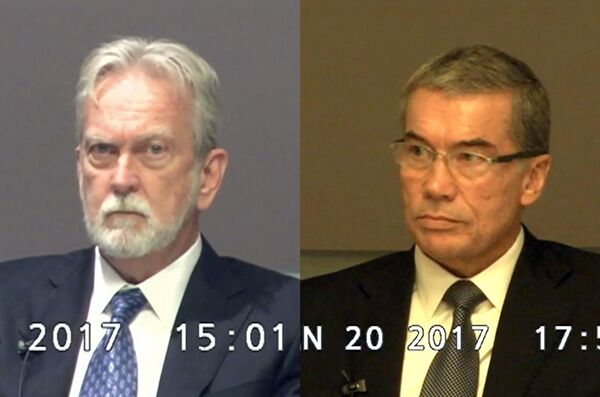While MKULTRA began in April 1953 on the orders of then-CIA Director Allen Welsh Dulles, its origins lie in 1945, and Operation Paperclip — the secret transfer of top Nazi scientists to the US. Armed with extensive documentation on unethical Nazi human experimentation, including research into mind control, a clutch of military programs related to mental manipulation and behavioral modification were launched — including CHATTER, BLUEBIRD and ARTICHOKE.
MKULTRA was justified to Washington leaders on the (erroneous) basis Chinese, North Korean and Soviet forces had subjected Allied prisoners of war in the Korean War to mind control — the US was presented as being on the wrong side of a research gap, a situation the CIA was only too keen to reverse.
In reality, the CIA sought to produce a truth drug for use in interrogations, and explore possible uses for mind controlled subjects — such as the control of foreign leaders, and assassination.
'Illogical Thinking'
So it was that for the next 20 years, the CIA and the Special Operations Division of the US Army Chemical Corps engaged in a concerted campaign of criminality.
Along the way, the mental states and brain functions of unwitting and unwilling test subjects were tortured with abandon. Powerful psychedelic drugs such as LSD were administered, and individuals endured hypnosis, sensory deprivation, isolation, verbal and sexual abuse — and somehow, much, much more.

All drugs were typically administered without informed consent — a violation of the Nuremberg Code. Common victims included mental patients, prisoners, drug addicts and prostitutes ("people who could not fight back" one CIA officer said). In one case, the hallucinogenic drug was administered to a mental patient in Kentucky 174 days in a row.
Occupational Hazard
However, LSD was also administered to CIA employees, military personnel, doctors and other government agents. Spiking CIA agents grew so widespread as to become an "occupational hazard" for staff.
Several deaths may have resulted from this policy. For instance, army scientist Dr. Frank Olson — who'd collapsed into deep depression after a surreptitious dosing — fell to his death from the thirteenth story window of New York City's Hotel Pennsylvania.
Ruled a suicide at the time, a 1994 autopsy concluded the circumstances of his death and state prior to the plunge were "rankly and starkly" suggestive of homicide.
LSD was eventually dumped by MKULTRA researchers due to its unpredictability. The final straw may have come when an unwittingly spiked agent had a severe panic attack and ran screaming through the streets of Washington, seeing monsters in every car he passed.

Helms subsequently admitted to the existence of the program during the 1975 Church Committee investigation — although due to the bonfire of relevant documentation, the Committee could only base their investigation on the sworn testimony of participants.
Nonetheless, a 1977 a Freedom of Information Act request unearthed a cache of 20,000 documents relating to the project, which had been mistakenly filed in a financial records building. These documents were fully investigated in Senate hearings later that year.
The remaining documents largely recorded the program's catastrophic failure, but former CIA agent Miles Copeland has claimed the Senate saw only "the barest glimpse" of the scope of the project. He also speculated MKULTRA wasn't actually terminated in 1973.
The Deluge
The US government's interest in illegal drugs didn't end there. From 1964 —1968, the Army paid US$386,486 to professors Albert Kligman and Herbert W. Copelan to perform experiments with mind-altering drugs on 320 inmates at Holmesburg Prison, Philadelphia. The study aimed to determine the minimum effective dose of each drug needed to disable 50 percent of any given population.
Kligman and Copelan claimed they were unaware of any long-term health effects the drugs could have on prisoners — however, documents later revealed this was not the case.

"Research and medical experimentation on detainees was used to measure the effects of large-volume waterboarding and adjust the procedure according to the results," the report said.
For instance, after a number of waterboarding experiments, doctors recommended adding saline to the water to avoid "putting detainees in a coma or killing them through overingestion of large amounts of plain water". Sleep deprivation tests were also performed on over a dozen prisoners, in 48-, 96- and 180-hour increments, and doctors collected data to judge the emotional and physical effects of various torture techniques so as to "calibrate the level of pain experienced by detainees during interrogation" and identify whether using certain types of techniques would increase a subject's "susceptibility to severe pain".




